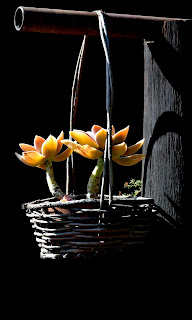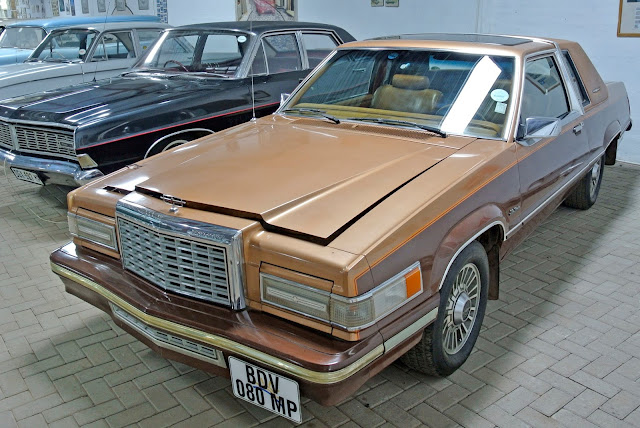Matthys Ferreira and Mellissa Bushby
If you did not attend this year's Electric Vehicle Challenge (EVC) you will regret it by the end of this article. If you were there, you will once again experience that warm fuzzy feeling which the event gave you.
The EVC has proved itself totally inspiring on all levels and it restores ones trust in millennials' ability to be innovative and persistent in ways that demand to be respected and nurtured.
This is the crux of this challenge: Learners have to design and build a battery-powered vehicle they will be able to drive around a set track for a full hour. There are different classes and the overall winner is determined by a combination of points scored for a full presentation of their project before the event, and the number of rounds completed at the actual race.
Entrants came from all over Mpumalanga and some schools were so inspired by previous events that they entered more than one team.
The specifications for these vehicles are quite extensive and also open to strict scrutiny before and on race day. Each class has to work within a set budget and produce receipts and invoices for every expense on the project. And, considering that some of these cars can reach speeds as high as 70km/h, safety is paramount.
This year, almost 30 schools took part, specifically the science and maths departments, and a few celeb teams were included in the fray to provide a lighter and somewhat less competitive mood.
Business owners should consider building and entering their own cars or become involved in sponsoring one of the many schools who really struggle to complete their cars for the event.
The EVC presents learners with many challenges: technically, scientifically, mechanically, mathematically, interpersonally, emotionally, physically, and many more, but whatever their individual challenges, they always come away from the experience enriched and feeling blessed for the opportunity to participate.
Strolling around the pits on this bright morning was a busy and upbeat affair, as everywhere you looked cars were being checked, last-minute embellishments were added, and any unnecessary bits were removed. These cars were being streamlined and prepared for this very important event.
The camaraderie and enthusiasm was palpable, the teams' cheerful banter and light-heartedness belying the fact that underneath, each of them had a gritty determination and intention of winning. Fun and games the entire business certainly is, but even more so, the fact remains that this is a competition. An edge, even a slight one, is what sets the challengers apart.
Some of these contestants were competing in the EV Challenge for the first time, but there were also a number of veterans. Paris Nzima, grandson of Sam Nzima, the photographer who took the iconic shot of Mbuyisa Makhubu holding the body of Hector Pieterson in his arms at the 1976 Soweto riots, with his car PariN GT was one of the newbies. Paris’ teammates Surprise Khoza and Prayer Makhubele were also competing for the first time and looked forward to the race ahead with eager enthusiasm. Their car took around two weeks to build, and Paris was already bursting with ideas for new and improved vehicles.
Also competing for the first time was Dasha, with their car Dash-It. The team, called The Dashers, were in full force, boasting bright colours and abuzz with excitement and joy at their achievements so far. For many of these learners, reading and writing is a challenge, so getting a licence to enter and then to take part in the actual race is a dream come true.
Other participants included car number 16, called Fast Dogs, a bright red-and-white striped vehicle which certainly looked the part. This team was focused and determined as they made their last-minute checks, and the Uplands cars Ghost Rider 2 and Short Circuit also geared up for a successful morning on the track.
Then there were the Vyfster Bakbouers with their sleek and professional-looking car, Bergvlam’s Amakiti and Ippitombi, Barberton High School’s Nitro, The Flash and Rolling Roland, Flamboyant’s green Electron and Blue Viper, among others.
Worth a special mention was one of the three Uplands entrants, Shiftwell, which was both built and manned by an all-girl team. This team were somewhat of a law unto themselves and often-times took the road less travelled.
Another special edition was Imagine Scholar’s Sputnik, held together entirely by glue and hessian, no welding in sight. A revelation, this car held on tenaciously and touched the hearts of everyone present on the day. Smoking Axels was another team which put in a reappearance. Last year their car was named Princess of Fear, but as these things go, they encountered a few challenges, such as the car being a little too heavy at the back. They addressed these issues and were back with a vengeance this year with a new and improved vehicle, also called Smoking Axels.
Curro’s vehicle called Lectric, built by Nicola Botha, is four years old and with her and her four co-drivers looked set to whip up a storm on the track.
The concept behind the EV Challenge is quite simple and so rewarding for the participants. Speed is not necessarily the most important thing. Staying power is imperative because once your battery energy starts to run out, you are in trouble. It truly is a case of slow and steady wins the race.
And so the anticipation and excitement that had been building up from the early hours came to a culmination, and the countdown began. The onlookers joyfully joined in and a loud cheer erupted as the flag went down and the race was officially under way. The contestants sped around the track, with very few mishaps between cars. A few of the drivers, such as Mbuso Ndlovu in Fast Dogs, cheerily tooted his horn at onlookers each time he passed by, and many of the celeb teams had the crowd roaring their approval at their outrageous clothing and laid back style.
By the time the race was over, everyone could heartily agree that saying the 2017 EV Challenge was a fun and informative day was indeed understating the obvious - it was absolutely fantabulous! Next year it will be even bigger and better, and with ever more teams taking part, who knows what is possible on the race track. This event is racing towards adulthood! We will keep you up to date with info on the upcoming night race in October.
We conclude with some post-mortem comments from parents and team leaders:
Ashleigh Trichardt:
"I got involved as a parent in the 2016 event as my son is part of the Flamboyant team, Blue Viper that won the Class B last year and this allowed these learners to realise that they can compete on the same level and on a fair and level playing field with learners from mainstream schools. Flamboyant may not be the strongest school at sport but the EV Challenge gave these learners and especially my son, an opportunity to see the potential they have in other areas.
So, this year I got involved in the committee and enjoyed putting this event together. I found that this allowed me to see and experience so much more. Instead of being in just one team, I felt part of all the teams as I got to know of the teams during scrutineering, all the emails, phone calls and being aware of all their challenges just to get their car race ready.
Klasie Botha: Organiseerder/hoofingeneur/karbouer/Dr Phil en meer: "Fantasties - die kwaliteit van die voertuie het so verbeter dat ons die reëls selfs strenger kan begin toepas. Die waarde wat die kinders uit die projek put, is onskatbaar. High five aan al die vrywilligers en borge."
Mark Schorman (organiser): "Awesome - no major hick-ups and yes, we are ready to take this to the next level. Don't miss 2018."
Richard Purdon: Dash-It - "Well organised and a wonderful experience all-round especially for the kids - a finish at their first involvement. Yes, we are there for the Oct night race as well as 2018."
Helene Botes: Protec - Uitstekende praktiese blootstelling vir die kinders aan baie en soms, oënskynlik abstrakte konsepte wat hulle op skool leer. 'n Kind wat aan die eerste EVC deelgeneem het en nou 'n 2de-jaarstudent op universiteit is, het onlangs opgemerk dat daardie deelname, steeds vandag, waarde en kennis in haar lewe vergestalt."
Tiaan Kruger: Curro - Fantastiese projek wat kinders 'n nuwe perspektief gee oor stroombane ensovoorts. Hulle moet navorsing doen, toets en weer toets voor finale sukses behaal word. Dit is beslis 'n projek wat langtermyntoewyding dikteer en aldus ook langtermyngevolge het. Dit is asof dit die kinders af rond met meer vaardighede en kennis as net meganies en wetenskaplik."
























































